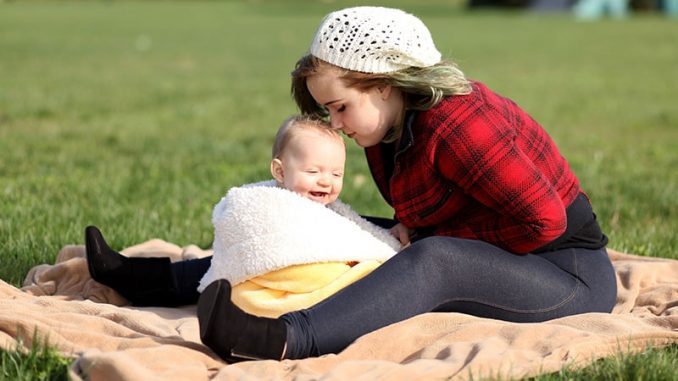
The decline in marriage rates in Canada is sharper among adolescent mothers, new data suggest.
An analysis of data from the Canadian Vital Statistics – Birth Database indicates that marriages declined by 80.5% among mothers younger than 18 years between 1989 and 2018.
“This study documents a decrease in marriage prevalence among mothers aged <18, 18–19, 20–24, and 25–49 years and suggests a larger relative decline in prevalence in younger mothers, especially those below age 18,” write study author Andrée-Anne Fafard St-Germain, PhD, a postdoctoral trainee at the University of Toronto, and colleagues.
The study was published online December 23, 2022, in the Canadian Journal of Public Health.
A General Decline
The researchers estimated marriage rates among mothers in the four age groups mentioned above. They compared marriage rates in each group during the periods 1989–1990 and 2017–2018. The study included records of 10,399,250 mothers. A total of 1,118,630 records were used to identify socioeconomic and geographic patterns.
The researchers found an expected decline in marriage rates between 1989 and 2018, but the decline was steeper among younger women. Marriage rates decreased by 13.6% among women aged 25–49 years (16.0% relative decline), 29.3% among those aged 20–24 years (47.3% relative decline), 14.3% among those aged 18–19 years (60.2% relative decline), and 6.7% among those under 18 (80.5% relative decline).
Compared with Canadian-born mothers, foreign-born mothers were more likely to be married in all age groups (adjusted odds ratios [aORs], 5.18 – 6.36). Residence in rural locales or small towns was also associated with greater probability of marriage (aOR, 1.27 – 1.32).
Compared with women in the prairie provinces, those in Ontario were more likely to be married (aOR, 1.23 – 1.41), while the rate was lower in Quebec (aOR, 0.27 – 0.70), the Atlantic Provinces (aOR, 0.49 – 0.65), and the territories (aOR, 0.26 – 0.49). The researchers found no statistically significant association between neighborhood income quintiles and marriage rates in those younger than 18. They found a greater likelihood of marriage for mothers aged 18–19 years and those aged 20–24 years who resided in neighborhoods in higher income quintiles.
Human Rights Concern
Commenting on the study for Medscape Medical News, Alissa Koski, PhD, assistant professor of epidemiology, biostatistics, and occupational health at McGill University, said, “Nearly all research on child marriage has focused on countries in South Asia and Africa. The authors acknowledge that child marriage remains legal across Canada. This draws attention to a domestic human rights concern that is largely unacknowledged.”
Overall, the study confirms trends that have been noted in Canada and have been studied by sociologists, Koski added. Traditional marriage rates have been declining for decades, while common-law marriages have been increasing. The mean age at the time of marriage increased from 30.0 years in 2016 to 30.7 years in 2020, according to Statistics Canada.
The study is limited by its failure to account for common-law marriages, which represent 98% of child marriages, said Koski. “The percentage of mothers in all age groups who were in legal or common-law marriage is almost certainly much higher than reported in this paper. However, because common-law unions are more common among younger people, the percentage of mothers in younger age groups, including those under 18, may be underestimated to a greater extent.”
The authors’ conclusion that the decline in marriages was larger among mothers younger than 18 years is not supported by the data in the article, said Koski. “That conclusion seems to overlook the fact that the absolute decline was lowest among those below age 18. The percentage decline in marriage was highest among mothers under 18, but this is at least in part because the percentage was so low to begin with. If we look instead at the absolute decline in marriage, it was lowest among mothers under age 18.”
The authors also suggest that the change in socioeconomic conditions associated with marriage may be different among mothers younger than 18 years, compared with mothers aged 18–19 years or 20–24 years. Higher socioeconomic status, as reflected in higher maternal neighborhood income quintiles, was associated with marriage among older adolescent mothers but not among mothers younger than 18 years. The socioeconomic distinction between married mothers younger than 18 years and older mothers could contribute to differences in the health advantages of marriage over time, the authors write.
But this conclusion as well is an “inappropriate interpretation…not supported by the data,” said Koski. She noted that births to mothers younger than 18 years are rare in Canada, and births to married mothers in that age group are even rarer. That factor could have led the study to be underpowered in this group and yielded odds ratios that are not statistically significant. “The data are consistent with either an increase or a decrease in the odds of marriage. The data were too sparse to measure accurately,” said Koski.
The study was funded by the Canadian Institutes of Health Research Foundation. Fafard St-Germain and Koski reported having no relevant financial disclosures.
Can J Public Health. Published online December 23, 2022. Full text
For more news, follow Medscape on Facebook, Twitter, Instagram, and YouTube.
Source: Read Full Article